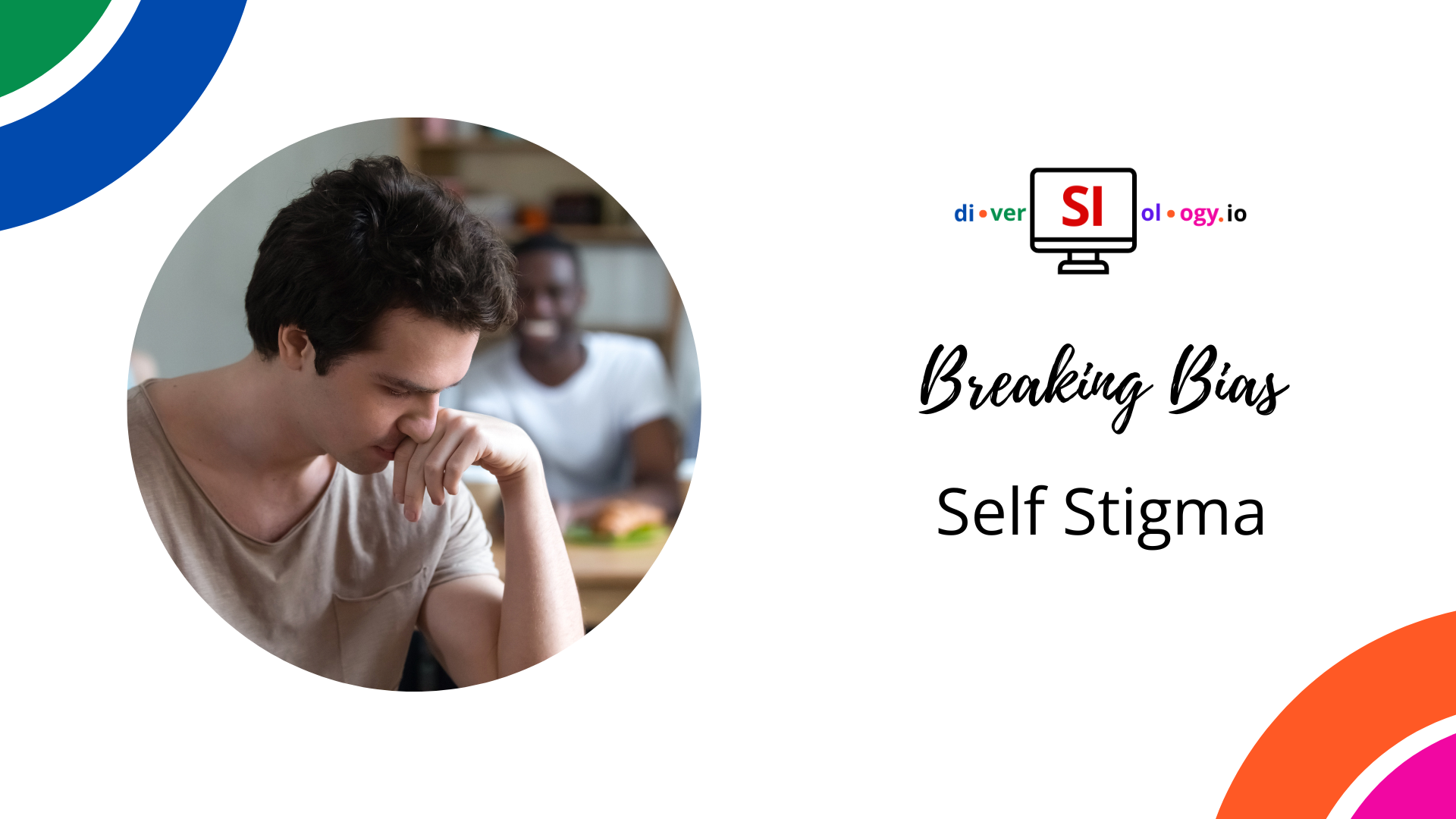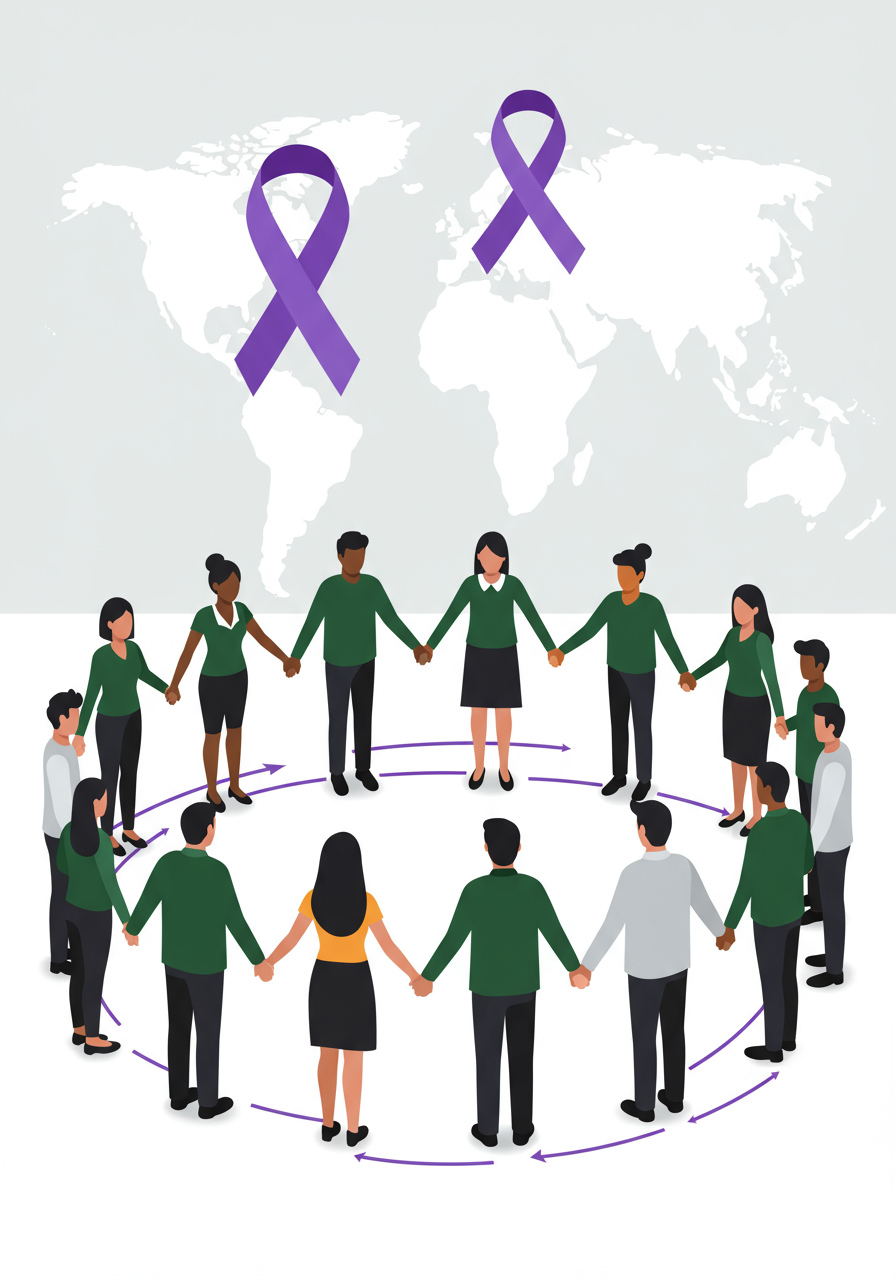🌟 Breaking Self-Stigma in the Workplace
When people feel confident and included, they thrive and contribute meaningfully in any environment. However, biases can undermine this sense of belonging. One such bias that can affect the workplace is self-stigma. This article unpacks self-stigma, its effects, and why addressing this bias is crucial for fostering inclusive workplaces.
🧩 What is Self-Stigma?
Self-stigma occurs when individuals internalize negative stereotypes and attitudes toward their identity or experiences. This can lead to feelings of inferiority, worthlessness, and low self-esteem, significantly impacting how individuals engage at work and in social situations. Common forms of self-stigma arise around mental health, physical disabilities, cultural identities, and socio-economic status.
💬 Why Self-Stigma Matters in the Workplace
Breaking the cycle of self-stigma is vital for fostering inclusion. When people internalize these stereotypes, they may withdraw from opportunities or underperform, believing they don’t belong. This affects overall team productivity, creativity, and diversity of thought. Organizations need to identify and challenge this bias to cultivate an environment where everyone feels heard, respected, and capable of excelling.
🏢 Case Study: Navigating Self-Stigma in the Workplace
Imagine Vanessa, a talented project manager at XYZ Corporation, who has recently been diagnosed with a chronic illness. Despite positive feedback on her work, she internalizes the stereotype that those with her condition are less capable. As a result, she refrains from speaking up in meetings and turns down leadership roles, thinking she won’t be able to manage them effectively.
Her colleague, Amir, notices Vanessa’s reluctance and offers his support, encouraging her to share her unique perspective with the team. Vanessa gains confidence through his affirmation, gradually overcoming her self-stigma and embracing leadership opportunities. The team benefits from her renewed engagement, and XYZ Corporation promotes her to a senior role.
Reflective Questions:
- In what ways could self-stigma have held Vanessa back if it wasn’t addressed?
- How did Amir’s approach foster a supportive environment for Vanessa to overcome her self-stigma?
- What organizational practices can promote inclusion for those dealing with self-stigma?
🌈 Why Leaders Must Recognize and Address Self-Stigma
Leaders wield significant influence over workplace culture and individual well-being. Here’s how they can improve their approach to managing and addressing self-stigma:
- Model Vulnerability: When leaders are open about their challenges and biases, it sends a powerful message. Sharing personal stories helps break down stigma, making it easier for others to recognize and discuss their struggles.
- Listen Actively: Prioritize one-on-one conversations to understand team members’ unique experiences and concerns. Active listening, without judgment, builds trust and empowers individuals to voice their needs.
- Champion Inclusive Policies: Policies around mental health, disability accommodations, flexible work, and DEI training should be clear and accessible. Leaders must ensure these policies are well-communicated and consistently implemented.
- Encourage Allyship Programs: Promote mentoring and allyship within teams so that employees can collectively challenge stereotypes and biases. Peer support groups also help reinforce positive engagement.
- Recognize and Reward Contributions: Acknowledge team members’ successes, especially those who may feel overlooked due to self-stigma. Recognizing their value can boost confidence and foster inclusion.
- Prioritize Continuous Learning: Commit to ongoing education for yourself and your team on recognizing and interrupting biases. Encourage participation in webinars, workshops, and learning modules.
- Measure Impact: Regularly assess your organization’s culture and employee well-being. Use surveys, focus groups, or pulse checks to gather honest feedback. Take actionable steps based on the findings to build a more inclusive environment.
🛠️ Strategies to Interrupt Self-Stigma:
- Educate and Challenge Negative Beliefs: Learn about stereotypes and biases related to your identity or experience. Recognize these beliefs for what they are and remind yourself that they don’t define you. Seek out examples of people with similar backgrounds who have achieved great things.
- Seek Professional Guidance: Work with a therapist or counselor who specializes in your specific challenges. They can offer strategies to reframe negative thoughts, recognize your strengths, and work toward goals that align with your values.
- Build Supportive Networks: Surround yourself with supportive colleagues, friends, or groups who value you for who you are. Participating in support groups or mentorship programs can offer valuable insight and affirmation.
- Set Personal Goals: Break down your goals into manageable steps and celebrate each achievement, no matter how small. Tracking your progress can build confidence and reinforce positive beliefs about your abilities.
- Advocate for Yourself: Learn to advocate for your needs in the workplace or other settings. Communicate your worth and contributions clearly, and seek opportunities aligned with your skills and interests.
- Practice Self-Compassion: Recognize that everyone has challenges, and give yourself grace when you face setbacks. Treat yourself with the kindness you would offer a friend, and prioritize self-care activities that rejuvenate your spirit.
🌐 Join Diversiology’s Free Community!
Ready to break down biases and build a more inclusive workplace? Join the Diversiology.io free community to connect with like-minded professionals, access resources, and share best practices.
📚 Additional Resources:
- American Psychiatric Association: Stigma and Discrimination
- Verywell Health: Self-Stigma: How We Perpetuate Prejudices About Ourselves
- Mental Health Information Series: Dealing with Self-Stigma








